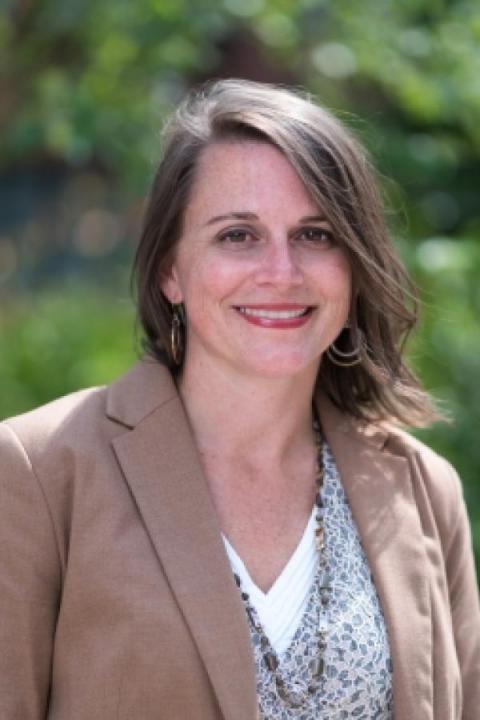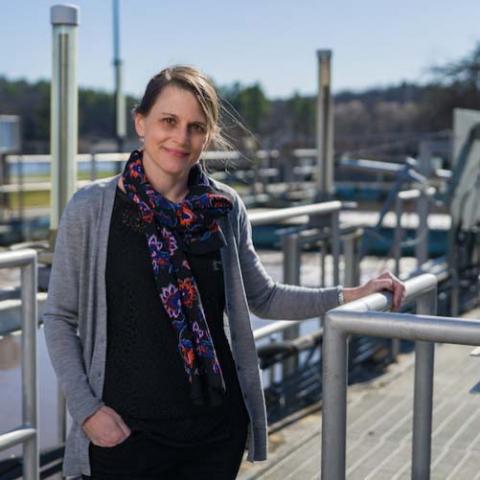Wastewater treatment plants remove many contaminants before water is released back into surface waters, like New Hampshire’s Great Bay. However, most treatment facilities are not designed to remove contaminants of emerging concern such as pharmaceuticals, personal care products, and perfluorinated alkyl substances (PFAS) – some of which can have sublethal toxic effects on aquatic life and people. To examine this growing threat, Paula Mouser and her team at the University of New Hampshire will apply new analysis tools to better understand how the operation of wastewater treatment facilities can influence the removal of these emerging contaminants. The team hopes to identify strategies that could reduce the amount of these compounds released from treatment facilities into tributaries of the Great Bay estuary.

PRINCIPLE INVESTIGATOR:
Paula Mouser, Ph.D., PE
Associate Professor, College of Engineering and Physical Sciences, UNH
Adjuct Associate Professor, Ohio State University
Contact Dr. Mouser
Paula.Mouser@UNH.edu
Project Funding Cycle
2020-2021 NH Sea Grant Biennial Research Funding
CO-INVESTIGATORS:
James Malley Jr, Ph.D.
Professor, Civil and Environmental Engineering, UNH
Contact Dr. Malley
Jim.Malley@UNH.edu
Jenna Luek, Ph.D.
Post-doctoral Research Associate, Civil and Environmental Engineering, UNH
Contact Dr. Luek
Jenna.Luek@UNH.edu
Project Abstract
Wastewater treatment facilities act as a major source of contaminants of emerging concern (CEC) to surface waters, concentrating a range of contaminants from pharmaceuticals and personal care products to flame retardants and industrial chemicals. Not originally designed for the removal of these low level and diverse contaminants, treatment processes ineffectively remove many contaminants which are known to exhibit a range of sublethal toxic effects to aquatic organisms as well as humans. Contributing 10+ million gallons daily to Great Bay estuary, it is essential to understand wastewater treatment facilities as CEC sources and to target these systems to reduce CEC loads to the estuary. We seek to address three fundamental knowledge gaps in our understanding of wastewater treatment facilities as CEC sources:
- The role of treatment facility design on effluent CEC loadings
- The role microbes play in CEC transformation during secondary treatment
- Tools to promote CEC degradation during treatment that are not prohibitively expensive.
To address these knowledge gaps, our proposed research combines field sampling of six wastewater treatment facilities and select surface water locations for a suite of pharmaceutical and personal care products (PPCPs) and perfluorinated alkyl substances (PFAS) with laboratory-scale experiments designed to understand and improve their transformation and mineralization through the promotion of specific microbial reactions and disinfection reactions. Combining state-of-the-art microbial and chemical analysis tools, this research will provide essential information on CEC loadings from treated wastewater to regional surface waters and assess specific strategies to reduce CECs in WWTF effluent tailored to existing infrastructure. In addition to the broader scientific community, we have identified wastewater treatment operators, the Piscataqua Region Estuaries Partnership, and New Hampshire state agencies managing environmental and water quality as specific end users for our research. Ultimately, we aim to inform the New Hampshire Sea Grant mission to "promote responsible stewardship on New Hampshire's ocean, coastal, and estuarine resources" and ensure "coastal waters are safe and clean for recreation and locally harvested seafood" by identifying sources and strategies to reduce CEC loadings to the Great Bay estuary.
Project News


